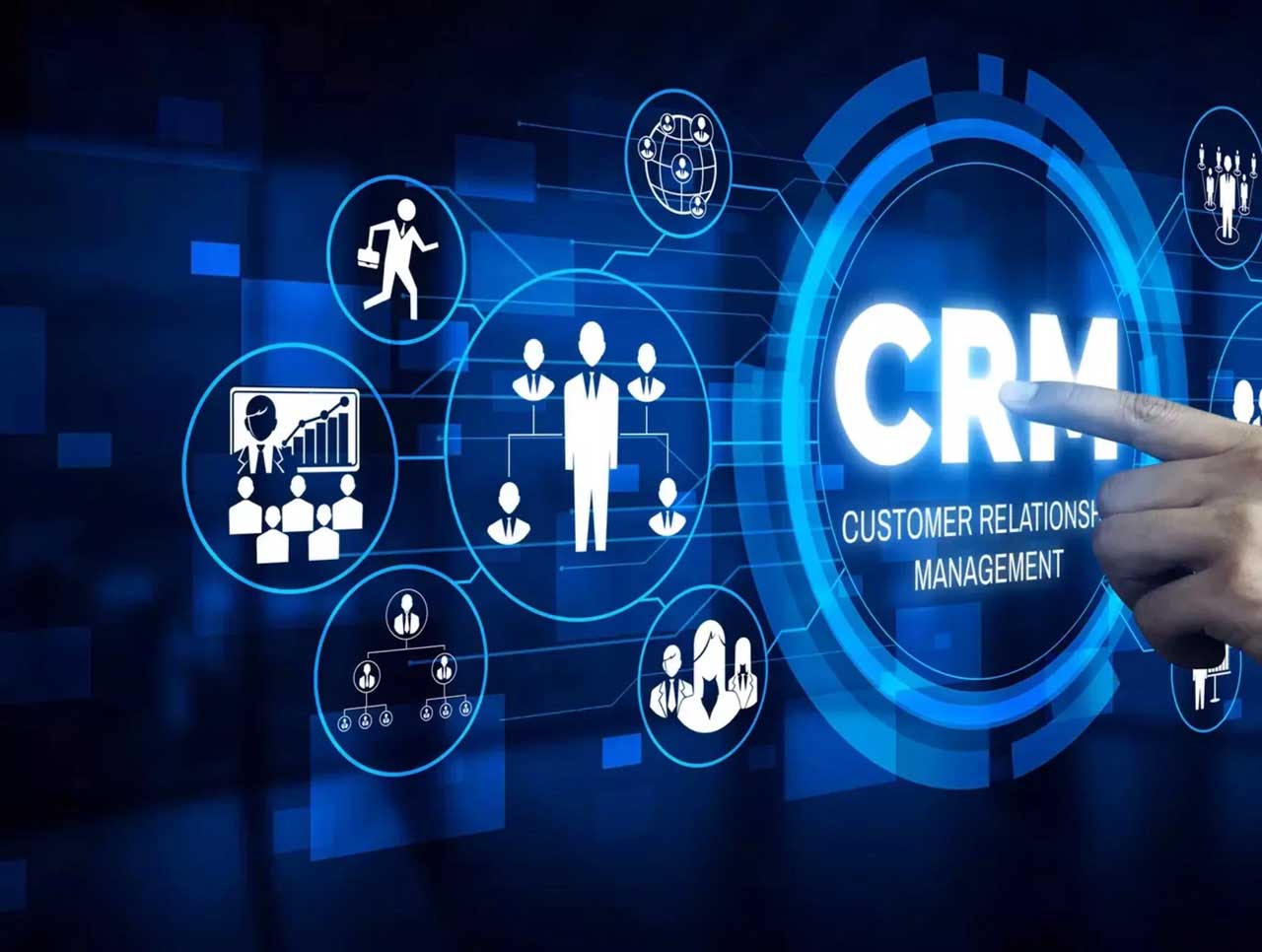Imagine you are a customer who is looking for a product or service that can solve your problem. You browse the internet, read reviews, compare prices, and finally decide to contact a company that seems to offer what you need. How do you feel if the company responds to your inquiry promptly, courteously, and professionally?
How do you feel if the company listens to your needs, offers personalized solutions, and follows up with you after the purchase? How likely are you to buy from this company again, or recommend it to others?
If you are like most customers, you feel valued, satisfied, and loyal. You are more likely to trust this company and become a repeat customer. This is the power of customer relationship management (CRM), the process of managing and improving the interactions and relationships between a business and its customers. CRM can help a business attract, retain, and satisfy its customers, as well as increase its sales, revenue, and profitability.
This article provides you with five practical and effective steps on how to improve your customer relationship management and grow your business. By following these steps, you improve your ability to communicate better, understand more, and deliver value to your customers.
To improve your customer relationship management:
- Communicate Regularly With Your Customers.
- Meet Your Customers Where They Are
- Practice Active Listening
- Show What You Know
- Reward Loyalty
Eager to know more? Read on!
>>> MORE: How To Set Up A Sales Funnel
1. Communicate Regularly With Your Customers.
To get better at managing your customers, communicate regularly with your customers. Regular communication can help you build trust, loyalty, and satisfaction with your customers, which makes you have informed, engaged, and happy customers
Here are some tips on how to communicate effectively with different channels:
- Email: Email is one of the easiest ways to reach customers. Send newsletters, updates, promotions, surveys, or personalized messages via email. Be careful with email frequency, timing, and substance. Avoid spamming or boring customers with emails. Make sure your emails are clear, concise, and professional with a catchy subject line, a kind welcome, and a clear call to action. HubSpot CRM lets you customize email campaigns, track open and click rates, and segment your email list.
- Phone: Phone is another effective way to communicate with your customers, especially when you need to resolve issues, answer questions, or provide support. Phone calls allow you to interact with customers and express your tone, emotion, and empathy. Ensure you also respect clients’ time and preferences. You do not want to call them late or without permission. Also, create a script or agenda for your phone calls and follow up with an email or text to confirm specifics or the next steps. You can use HubSpot CRM, which lets you record calls, arrange appointments, and set reminders.
- Live chat: Live chat is a fast and convenient way to communicate with your customers, especially when they visit your website or app. Customer communication via live chat is fast and convenient, especially on your website or app. Live chat increases conversions, retention, and happiness by providing real-time customer support, feedback, and direction. Get your live chat representatives trained, available, and responsive. Do not delay consumers or provide them with incorrect information. Keep your tone polite and professional, and avoid jargon, slang, and emoticons. HubSpot CRM can automate chatbots, integrate live chat with your website or app, and evaluate chat performance.
2. Meet Your Customers Where They Are
To improve your CRM, meet your customers where they are. This means identifying and segmenting your customers, and then tailoring your messages and offers to suit each customer segment.
To do this, you need to know your customers and customize your messages and offers for them. You can use data and tools to segment your customers based on their preferences, behaviors, and needs, and create relevant and personalized content and campaigns for each segment.
You also need to reach out to your customers on the platforms or channels they prefer, such as social media, blogs, or podcasts. You can use different types of content, such as tips, stories, videos, or interviews, to connect, educate, entertain, and promote your products or services to your customers.
3. Practice Active Listening
To enhance the management of your relationships with clients, practice active listening. Active listening is the skill of listening to your customers’ feedback, questions, and concerns with full attention, empathy, and respect. Active listening can help you understand your customers’ pain points, expectations, and desired outcomes, as well as build trust, rapport, and loyalty with them.
Here are some techniques or strategies on how to practice active listening:
- Ask open-ended questions. Open-ended questions are questions that require more than a yes or no answer and encourage your customers to share more information, feelings, or opinions. For example, instead of asking “Are you satisfied with our product?,” you can ask “How do you feel about our product?” or “What do you like or dislike about our product?”
- Paraphrase and summarize. Paraphrasing and summarizing are ways of repeating back what your customers have said in your own words, to show that you understand them and to clarify any misunderstandings. For example, you can say “So, what you are saying is that you don’t like the delivery time of your order, and you want to know when you can expect it.” or “Let me make sure I got this right. You are happy with the quality of our service, but you prefer to see more features and options.”
- Reflect and empathize. Reflecting and empathizing are ways of acknowledging and validating your customers’ feelings and emotions and showing that you care about them. For example, you can say “I can see that you are very happy about our new offer.” or “I understand that you are disappointed with the outcome of your project.”
- Use positive and supportive language. Positive and supportive language is a language that expresses your interest, appreciation, and encouragement to your customers and avoids negative, critical, or judgmental words. For example, you can say “Thank you for your feedback. We appreciate your input and we will use it to improve our products and services.” or “We are sorry for the inconvenience. We value your business and we will do our best to resolve this issue as soon as possible.”
4. Show What You Know
To make your CRM more effective, show the customers what you know. This means demonstrating your expertise and credibility by providing valuable and relevant information to your customers. By doing this, you can educate your customers on your products, services, or industry, and help them make informed and confident decisions.
To personalize your interactions and recommendations, you need to use data and insights to understand your customers better. You need to collect and analyze data about your customers, such as their demographics, psychographics, purchase history, feedback, and online activity. You can use tools like Gainsight to analyze and visualize customer data and identify patterns, trends, and opportunities. You can also use tools like HubSpot CRM to create and manage customer profiles and segment your customers based on various criteria.
Once you have your data and insights, you need to use them to tailor your messages and offers to each customer. This means creating content and campaigns that address the specific needs, pain points, and expectations of each customer, and highlighting the benefits and value of your products or services for them.
You can also use data and insights to suggest products or services that match your customers’ preferences, behaviors, and goals, and upsell or cross-sell them. You can use tools like Sprinklr to create and distribute personalized content across different social media platforms, and tools like Shopify to create and manage personalized offers and discounts.
>>> PRO TIPS: How to Build Sales Funnels
5. Reward Loyalty
To improve the management of your relationships with customers, reward loyalty. This means appreciating and acknowledging your loyal customers by offering them incentives, discounts, or rewards.
You can use data and tools to create and implement a loyalty program that fits your business model and goals, such as points-based, tiered, or subscription programs. You can also use CRM software to track and measure customer loyalty and retention, such as CLV, CRR, and NPS.
By doing this, you can increase customer satisfaction, retention, and referrals, as well as generate more revenue and profit.
Recap
Improve your customer relationship management by keeping in regular contact with your clients, meeting with them where they like to hang out, actively listening to what they have to say, showing off your expertise, and rewarding and recognizing their loyalty.
Growing your business is possible with the help of customer relationship management (CRM). A combination of data, technologies, and content allows you to provide customers with unique and worthwhile experiences. You can monitor and assess client loyalty and retention with the use of customer relationship management software.
>>> GET SMARTER: How to Choose a Landing Page Builder













